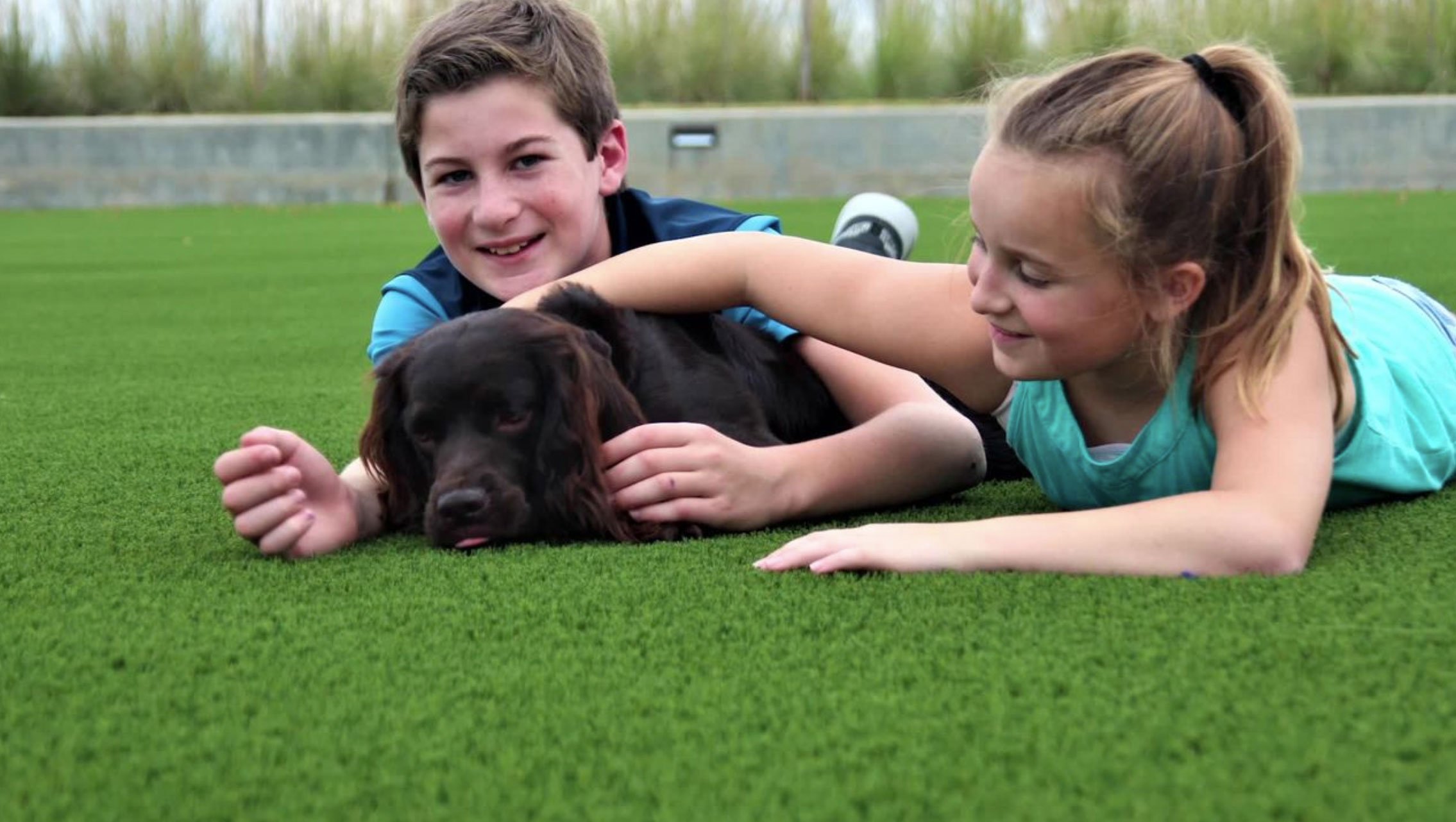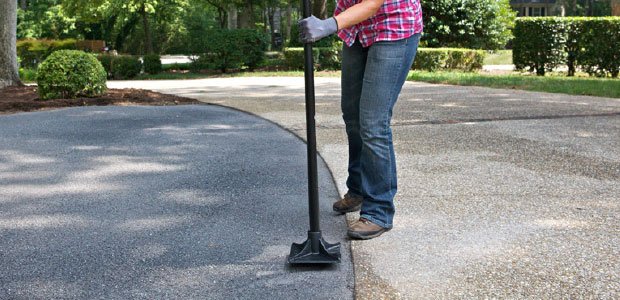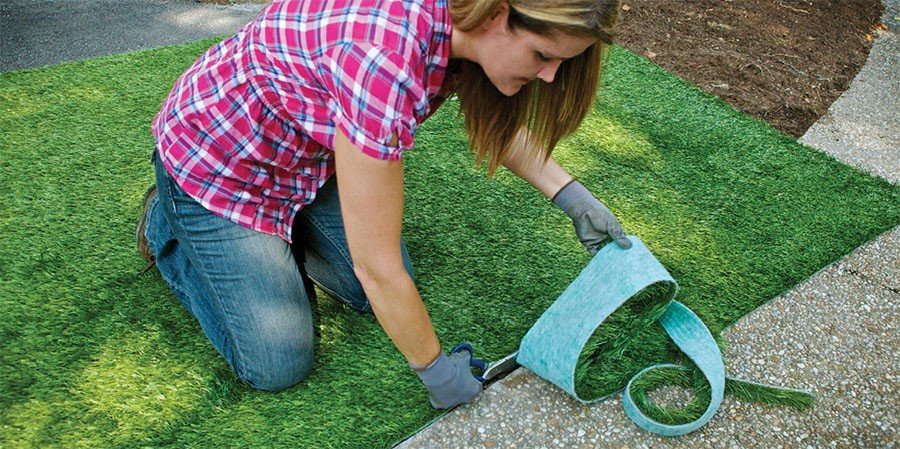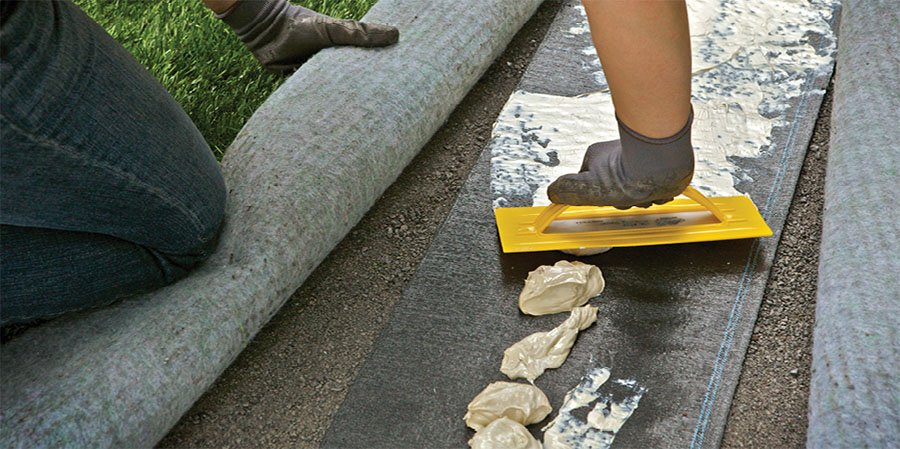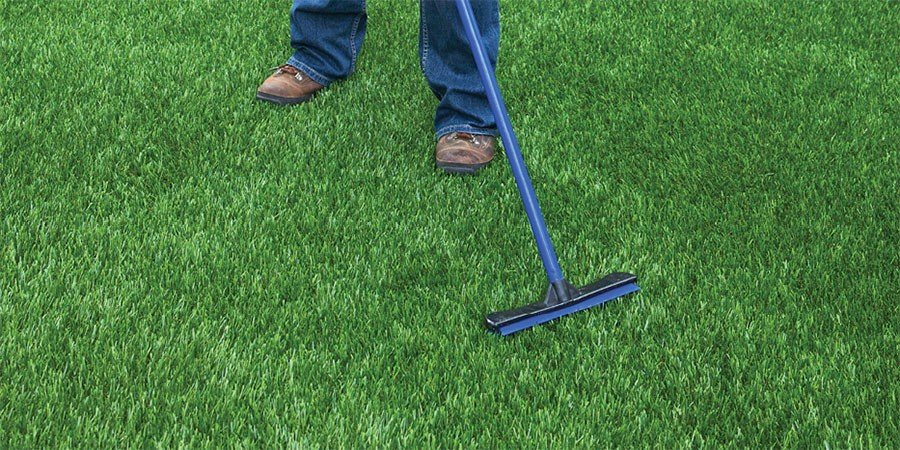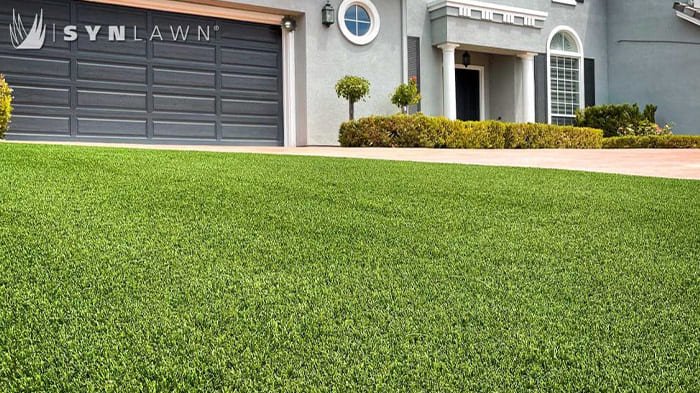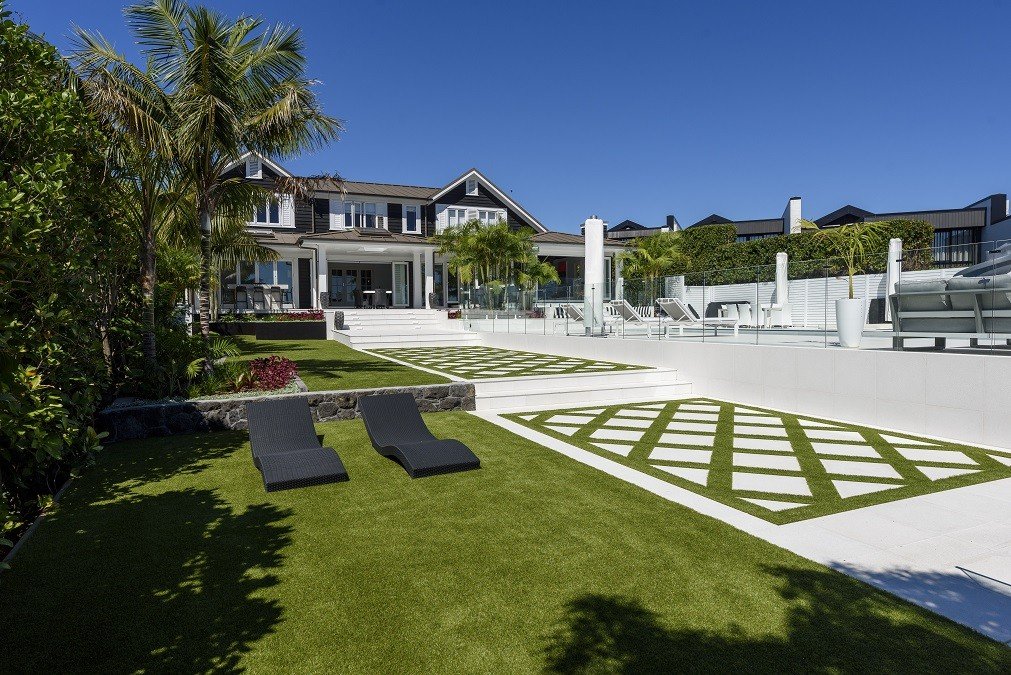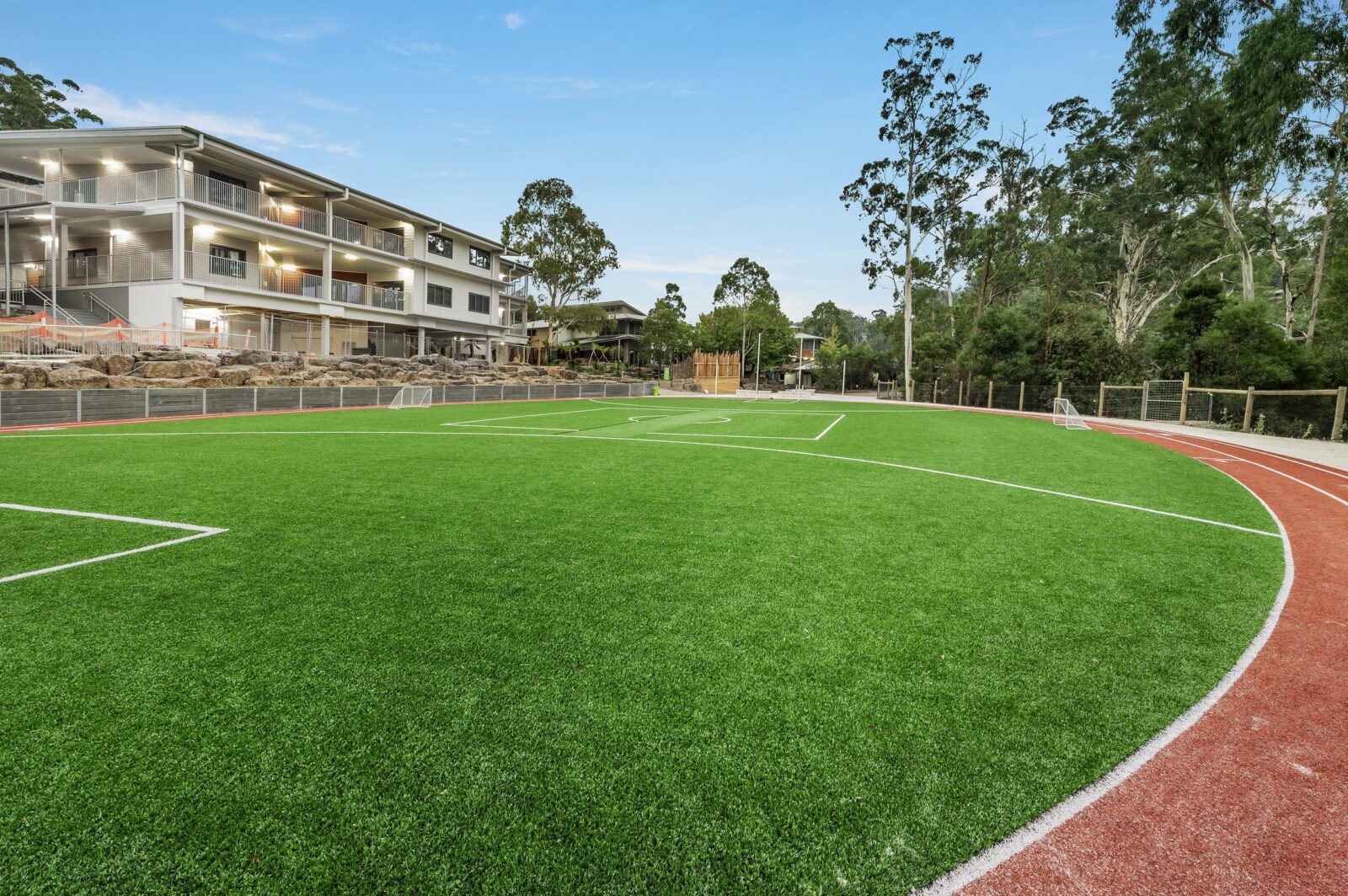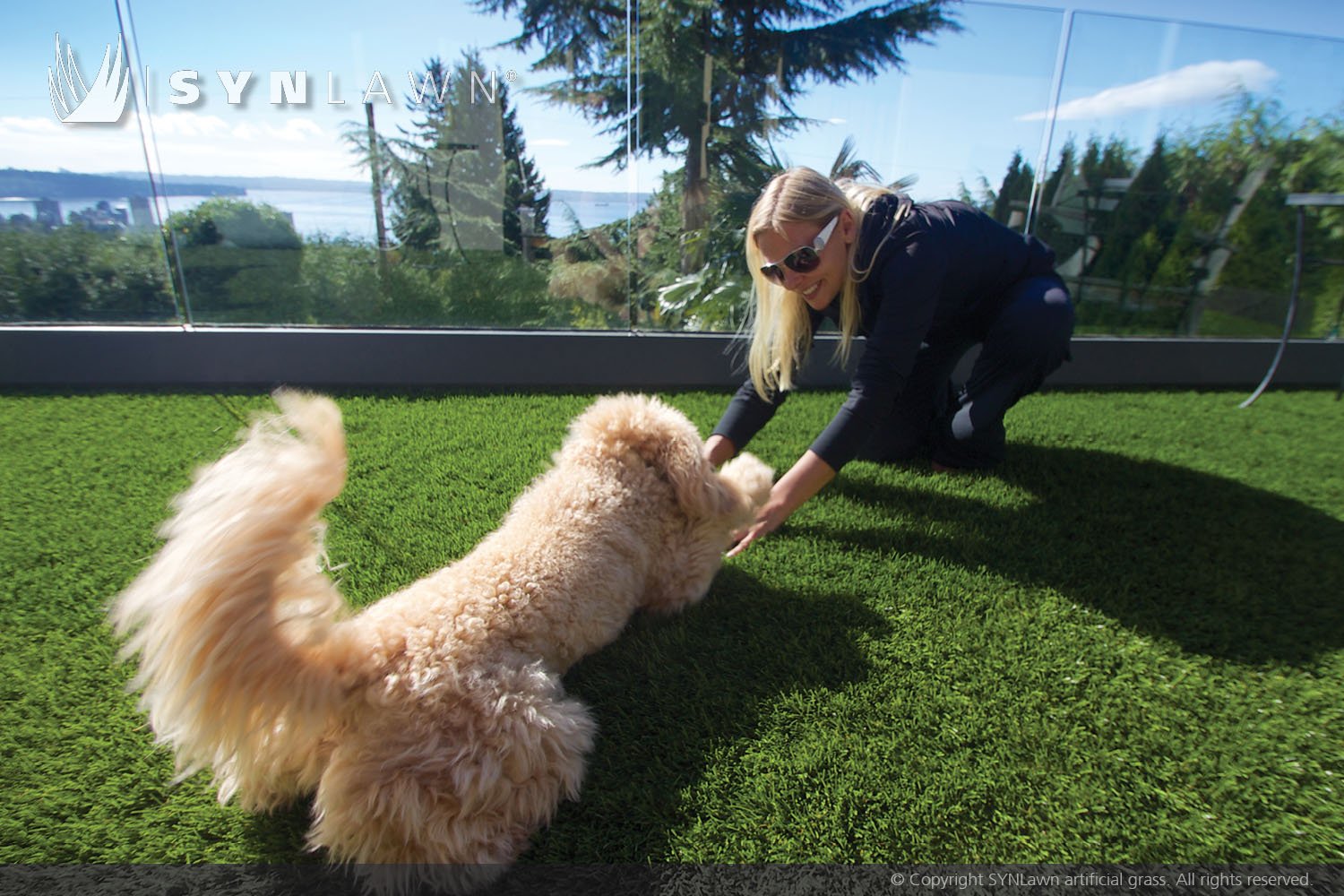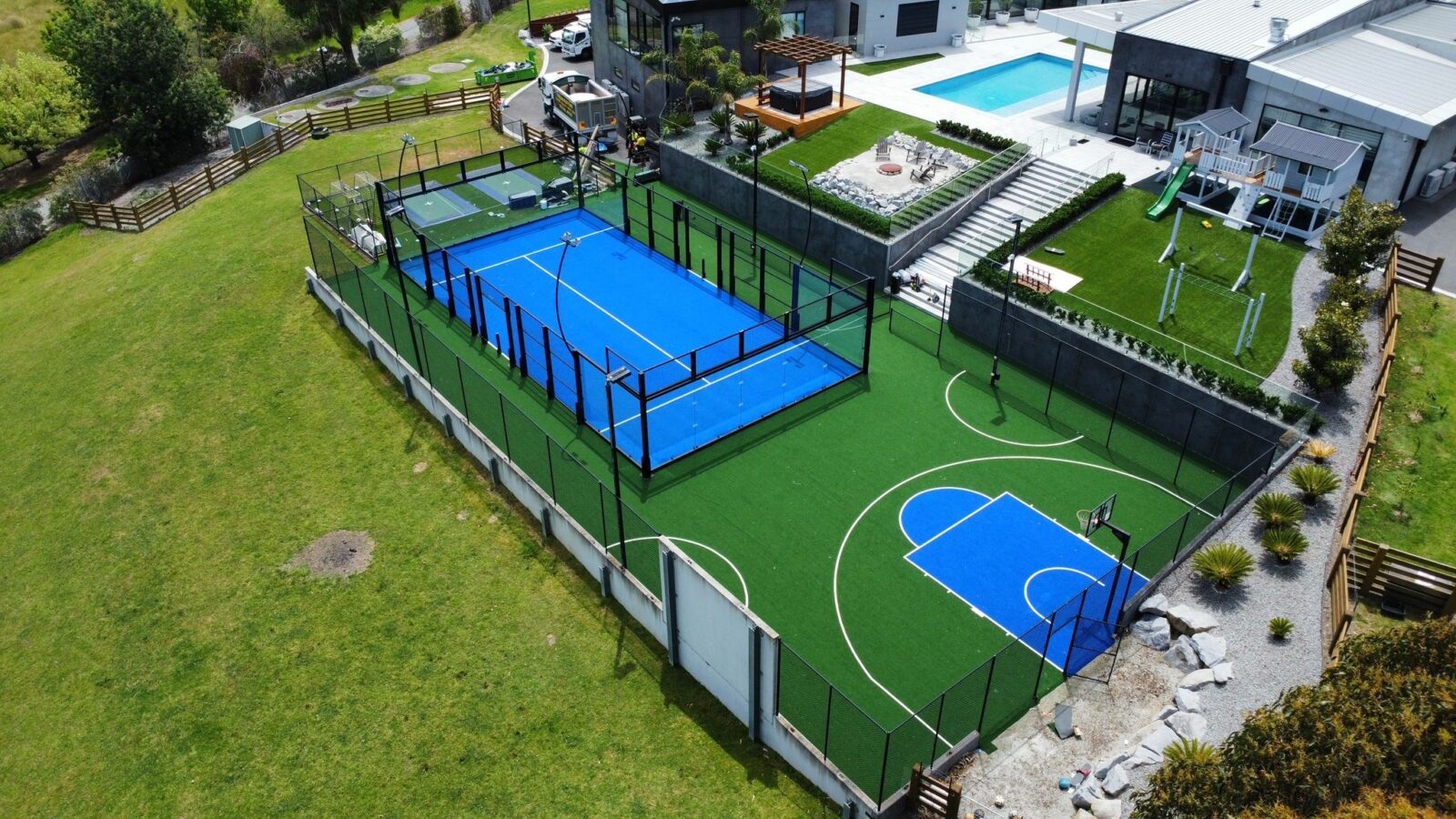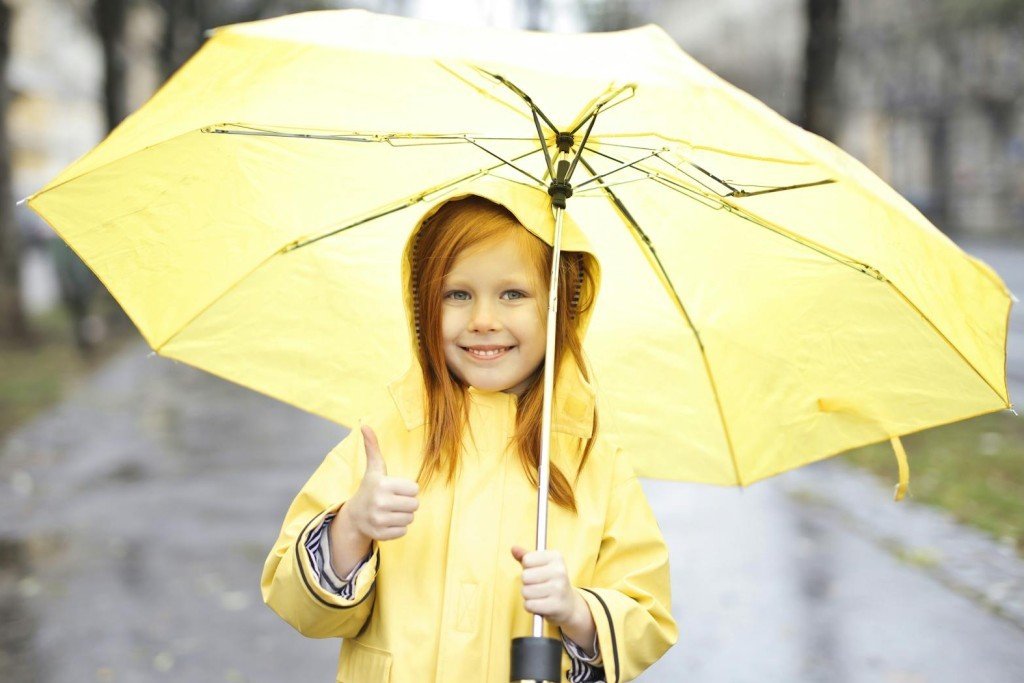DIY ARTIFICIAL TURF INSTALLATION
If you’re a confident DIY-er, you can achieve a beautiful, low-maintenance lawn by following SYNLawn’s step-by-step installation guide. With the right preparation and tools, you’ll enjoy a stunning result that’s both practical and long-lasting.
What You’ll Need to Get Started
Before starting your DIY artificial turf installation, make sure you have the right tools. The correct equipment will help you achieve a smooth, professional finish that lasts.
Specialty Tools
- Everseal adhesive tape (5LM or 25LM)
- 150mm flat head nails or landscape pegs
- Turf rake (for bristle fibers)
- Sand spreader
- Vibrating plate (hire)
- Dried silicon sand
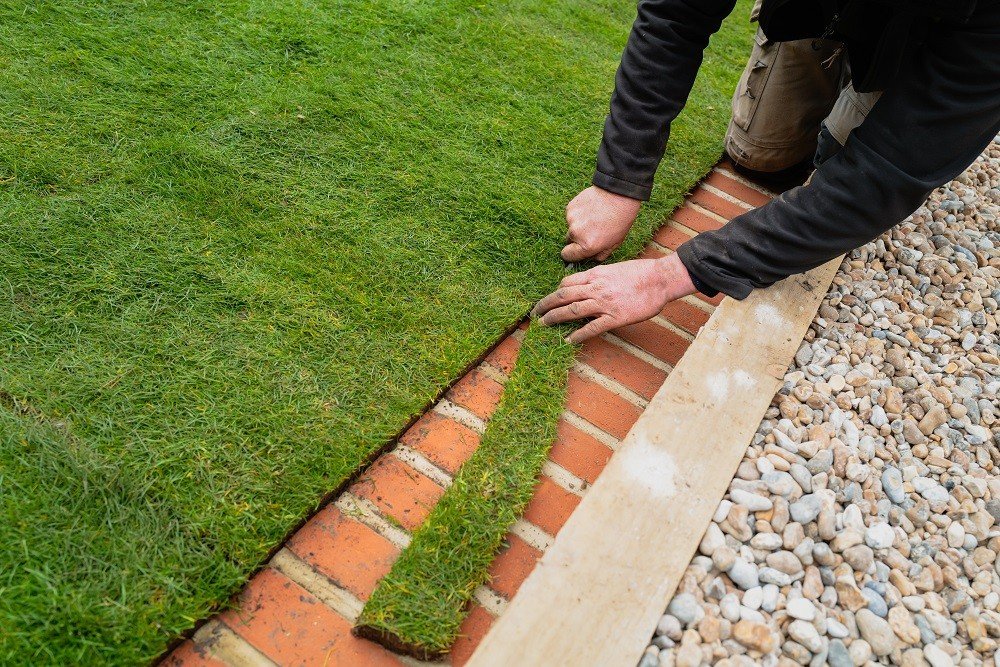
Common Tools
- Stanley knife
- Hammer
- Yard rake
- Shovel
- Wheelbarrow
- Tape measure
- Wide shop broom
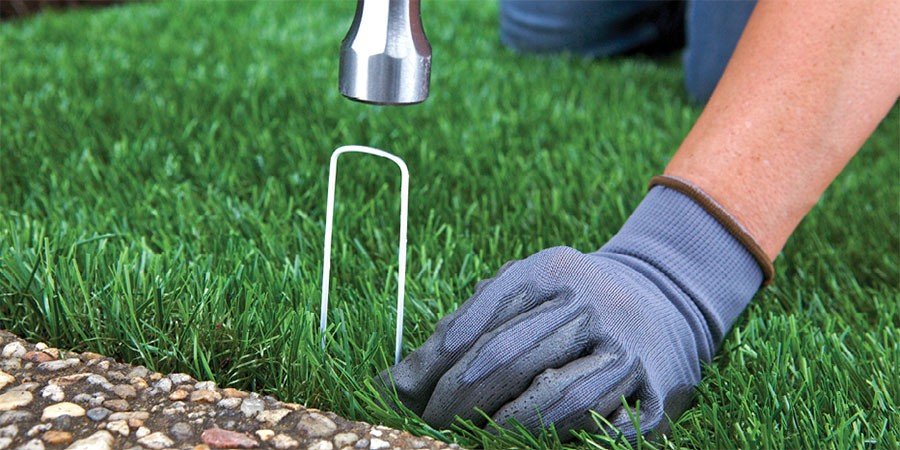
Regular Artificial Grass Installation
Preventing Reflective Sunlight Damage
SYNLawn turf is built to handle Australian conditions, withstanding normal surface temperatures of 65–75°C. However, intense reflected heat – from windows, mirrors, polished gutters or reflective panels – can raise temperatures above the turf’s melting point, causing shrinkage or fibre damage.
To protect your lawn:
- Leave a 100cm buffer between turf and reflective surfaces where possible.
- Install awnings, screens or shade cloth over windows.
- Use non-reflective paint on shiny surfaces such as gutters and drainpipes.
- Adjust mirrors or panels to redirect reflected sunlight.
- For unavoidable reflections from neighbouring properties, consider using landscaping solutions such as garden beds, pebbles, rocks, ponds or planting small trees in affected areas.
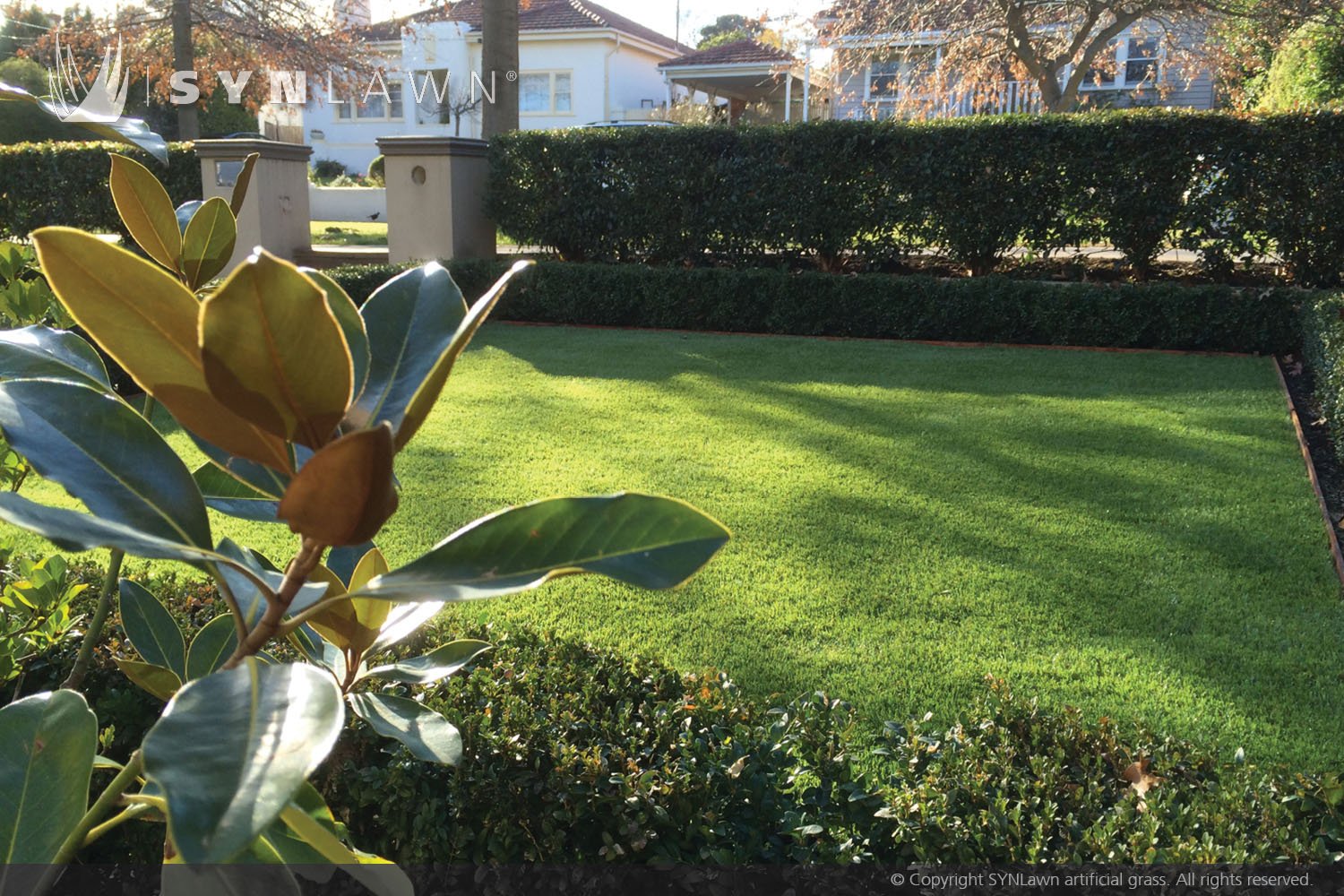
Important Information
- Never attempt to lift or move turf rolls on your own. Cut rolls into manageable lengths before handling.
- Ensure all turf pieces are laid in the same direction for a consistent finish.
- Refer to the Product Specification Sheet for the recommended amount of infill.
- This installation guide is provided for reference purposes only.
- Please note: SYNLawn warranties do not cover installation.
